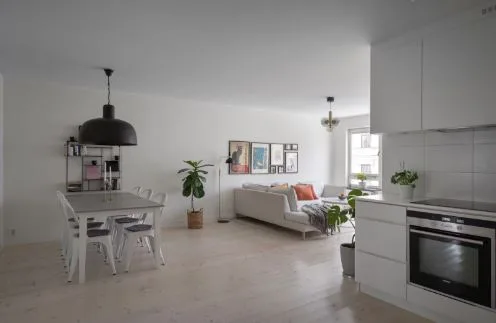How Do You Install a Concrete Ping Pong Table?
A concrete ping pong table is one of the most durable and long-lasting additions you can make to a public park, school courtyard, or even your backyard. Built to withstand the elements, it provides endless hours of entertainment without the constant upkeep required by traditional tables. However, installing one properly takes planning, preparation, and the right materials. If you’re wondering how to install a concrete ping pong table, this guide will walk you through every step, from choosing the location to completing the setup.
Choosing the Right Location
Before you begin installing a concrete ping pong table, selecting the perfect location is essential. Start by evaluating your available space. The area should be level, spacious, and accessible. Ideally, you’ll want at least 19 feet by 11 feet of open area to allow enough room for players to move freely. For public installations, choose a location that’s visible and encourages social interaction, such as near walking paths, picnic areas, or playgrounds. For residential installations, a flat patio or backyard space works well. You should also consider sunlight exposure and nearby obstacles. Constant direct sunlight can heat the concrete surface, while overhanging trees may drop leaves or sap. Pick a shaded or partially shaded area that provides comfort and visibility without obstructions. Once you’ve identified the ideal location, mark the perimeter of the space where the table will sit.
Gathering Materials and Tools
Installing a concrete ping pong table requires a few essential materials and tools. The table itself typically arrives in multiple pieces: two concrete tabletop halves, a net assembly, and concrete or steel bases. Some manufacturers may provide pre-cast bases that simplify installation, while others require you to pour the foundation yourself. Common tools and materials include a shovel, level, tape measure, wheelbarrow, concrete mix (if pouring a slab), gravel for drainage, rebar or mesh reinforcement, a trowel, and safety equipment such as gloves and eye protection. If you’re working in a public space, ensure you have the proper permits or approvals before beginning.
Preparing the Foundation
The foundation is the most critical part of the installation. A solid base prevents the table from shifting, cracking, or becoming uneven over time. Start by clearing the area of debris, grass, or roots. Excavate a space about 6 to 8 inches deep and slightly larger than the table’s footprint. Fill the base with a few inches of compacted gravel to promote drainage and prevent water from pooling under the table. Next, pour a reinforced concrete slab that will support the weight of the table. The slab should be around 4 to 6 inches thick, reinforced with rebar or wire mesh for stability. Use a level to ensure the surface is perfectly even. An uneven slab will affect the play quality of the table and may cause damage over time. Allow the slab to cure for at least 48 to 72 hours, or longer depending on local weather conditions, before continuing installation.
Positioning the Table Components
Once the foundation is fully cured, it’s time to position the table components. Concrete ping pong tables are heavy, so enlist the help of several people or use lifting equipment such as a dolly or forklift. Start with the table bases. Place them directly onto the slab and use a level to make sure they’re aligned properly. The bases should be evenly spaced and centered within the installation area. If the bases require anchoring, drill holes into the concrete slab and use anchor bolts to secure them firmly. After the bases are in position, carefully set the tabletop halves onto the supports. Each half must align perfectly at the centerline to create a smooth and level playing surface. Use shims if necessary to fine-tune the height and eliminate gaps.
Securing the Net Assembly
The net assembly is usually made of stainless steel or aluminum for outdoor durability. Some concrete tables come with a permanent metal net cast into the surface, while others feature a detachable system. If your table includes a separate net assembly, follow the manufacturer’s instructions for attachment. Typically, this involves inserting bolts or clamps through pre-drilled holes in the table surface. Ensure that the net is centered and at the regulation height of 6 inches. A secure and properly aligned net enhances gameplay and maintains the professional look of your installation.
Checking for Level and Stability
After the main structure is assembled, double-check that the table surface is completely level. Use a long carpenter’s level or laser level to test several points across the tabletop. Adjust as necessary by adding or removing small shims beneath the table halves. This step is vital to ensure fair and consistent ball bounce. Once the table is level, test for stability by gently applying pressure to different areas. If the table rocks or shifts, tighten the bolts or anchors. Concrete tables are designed to be solid and immovable, so any wobble indicates an issue that needs correction.
Finishing Touches and Surrounding Area
With the table securely in place, consider finishing touches to complete your installation. Clean the surface of dust or debris using a soft brush or mild detergent and water. Avoid harsh chemicals that could damage the concrete sealant. You may also want to apply a concrete sealer to protect the surface from stains and weathering. For public installations, adding benches or seating nearby encourages spectators and creates a social hub. Installing a paved path or rubber flooring around the table helps define the play area and provides better footing. For private installations, you might landscape around the space with grass, gravel, or decorative stone to blend the table into its surroundings.
Maintenance Tips for Longevity
One of the biggest advantages of a concrete ping pong table is its minimal maintenance requirements. However, a little care goes a long way in preserving its quality. Clean the surface regularly to remove dust, dirt, or organic debris. Inspect the net assembly for rust or loose bolts and tighten as needed. In colder climates, protect the table during winter by covering it with a waterproof tarp to reduce exposure to snow and ice. Avoid using harsh chemicals or pressure washers, which can erode the surface over time. With basic upkeep, a well-installed concrete ping pong table can last for decades.
Common Mistakes to Avoid
When learning how to install a concrete ping pong table, it’s important to avoid common installation errors. Skipping the step of leveling the foundation is one of the biggest mistakes, as even small uneven spots can affect play and cause long-term damage. Another common error is neglecting proper drainage. Water accumulation under the slab can lead to cracking and instability. Be sure to include gravel or drainage channels to allow moisture to escape. Finally, avoid installing the table too close to obstacles like walls or trees. Adequate clearance ensures a safe and enjoyable playing environment for everyone.
Why Choose a Concrete Ping Pong Table?
A concrete ping pong table offers unmatched durability and resistance to weather, vandalism, and wear. Unlike traditional tables made from wood or metal, it requires no repainting or covering. Its weight and stability make it ideal for public areas where high traffic and exposure are concerns. Whether installed in a park, recreation center, or backyard, it adds lasting value and encourages community engagement. Plus, with its sleek, modern look, it can even serve as a decorative piece that enhances outdoor aesthetics.
Conclusion
Learning how to install a concrete ping pong table ensures you get the most from your investment. By choosing the right location, preparing a solid foundation, and carefully assembling each component, you’ll create a table that delivers excellent play performance and long-term durability. Whether for private enjoyment or public recreation, a properly installed concrete ping pong table offers years of fun, competition, and connection. Take the time to plan your installation thoroughly, and you’ll be rewarded with a professional-grade outdoor game setup built to stand the test of time.





